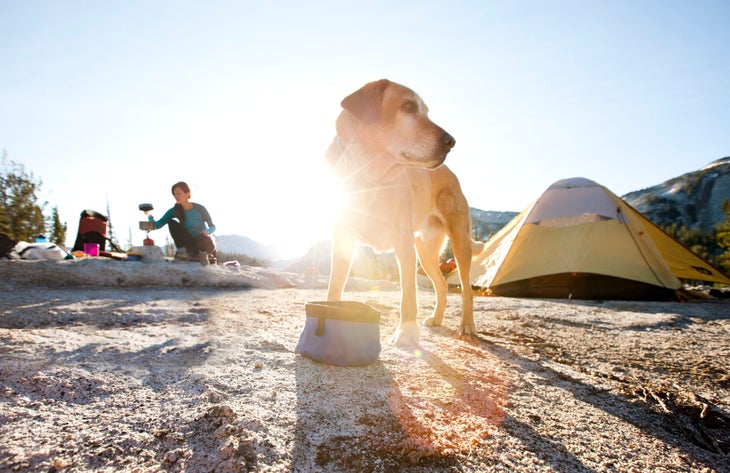Products You May Like
Get full access to Outside Learn, our online education hub featuring in-depth fitness, nutrition, and adventure courses and more than 2,000 instructional videos when you sign up for Outside+
Sign up for Outside+ today.
Injured paws are easy to spot, but many canine ailments are difficult to diagnose. Unlike other hiking partners, your dog can’t tell you what hurts. To help you help your pet, we consulted veterinarian Michael J. Brooks, a former backcountry ranger who camps with his Pekingese-Yorkie in Colorado’s Indian Peaks Wilderness. Learn these dog first aid tricks before hitting the trail with your pup.
Paw Injuries
Dog paws—like human feet—require conditioning to tackle longer hikes and rougher terrain. To protect against cactus spines, thorns, and sharp rocks, try nylon booties like Ultra Paws Durable Dog Boot, or rubber-soled Grip Trex Dog Boots. Remove the booties every few hours to let the dog’s pads–which contain sweat glands–air out. Administer first aid to your dog like you would on your own foot: clean and bandage.
Dehydration
“An average dog requires one ounce of water every day per pound of weight,” says Brooks. That means a 45-pound dog needs about 1.5 quarts per day, and more in hot weather. Check for dehydration by pinching the skin on your dog’s upper back. If it doesn’t quickly rebound after you let go, your dog needs water. Sunken eyes and dry mouth are other indicators. For water on the go, attach a collapsible dish to your pack.

Heat Stroke
Fewer sweat glands mean dog—who vent excess heat primarily through their nose and tongue—can’t cool themselves as easily as humans. They need frequent hydration, shade, and rest on hot days. Overheated dogs act sluggish and confused and pant excessively. Look for a dry mouth and nose. To treat an overheated dog, find shade and pour cool water on its belly and legs, where blood collects.
Hypothermia
Like children, smaller dogs lose body heat fast. Hypothermic clues include dilated pupils and constant shivering. If your canine is huddling with you, he’s cold. “Bring your dog into your sleeping bag,” says Brooks.
Ticks
During spring and summer, apply over-the-counter tick protections like Frontline or Advantix, and try to keep your dog away from dense undergrowth. If you find a tick during a nightly check, remove it by grasping it close to the skin with tweezers and pulling gently until it comes out. Apply a disinfectant or antibiotic ointment to the wound site.
Originally published in 2008; last updated June 2022
